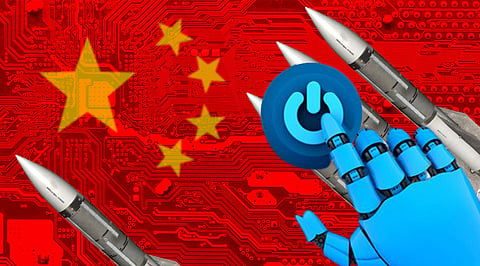

China has prioritised Artificial Intelligence in its quest to become a powerful superpower under Xi Jinping. Beijing's interest in AI development and use stems from the fact that technology may be used for both civil and military objectives. As a result, while AI advances can benefit China's economy and healthcare, they can also help the People's Liberation Army (PLA) engage in "intelligent warfare", which PLA strategists define as "the implementation of artificial intelligence and its related technologies, such as cloud technology, data analytics, quantum information, and autonomous systems for military uses."
AI and related technologies such as computer vision, human-machine teaming, neural connectivity, and autonomous systems also known as "intelligentized weapons", have been identified as critical to gaining an advantage in the next creation of warfare by China's military leaders and strategists. At the same time, they are concerned that other nations, particularly the United States, may surpass them in this area and develop the potential to overwhelm China's air defences and assault its command-and-control systems. As a result, China's central and provincial governments, the Chinese Communist Party (CCP), all PLA branches, and the country's state- and privately-owned industries are all working together. As a result, China's central and provincial governments, the Chinese Communist Party (CCP), and all branches of the party are taking part in a whole-of-society strategy.
The Chinese military is working hard to investigate, develop, and operationalize AI for military reasons, as part of Xi Jinping's mandate to become "completely modernised" by 2035 and on par with the US military by 2050. Laws and efforts, such as the National Security Law (2015), National Intelligence Law (2017), the New Generation Artificial Intelligence Development Plan, and Civil-Military Fusion, have been introduced to guarantee perfect compliance and synchronisation amongst all Chinese agencies.
In a separate programme, China began naming Chinese IT businesses as "AI Champions" in 2017 and assigned each one a specific AI sector to pioneer. Alibaba, Baidu, Tencent, Xiaomi, and Huawei are among the companies on the list. The PLA will almost certainly have access to the products of their AI investments.
China is working hard to harness AI's military potential and is attempting to outperform the United States. However, as Chinese experts point out, it lags behind the ruling superpower by at least a few years. More crucially, many of Beijing's problems, such as a scarcity of talent and technological know-how, insufficient infrastructure, and reliance on foreign suppliers for essential components like transistors, have been exacerbated by the continuous US-China conflict. Time will tell who wins and if China's reckless behaviour is punished or rewarded.
In recent years, the PRC has made significant attempts to incorporate artificial intelligence (AI) into its military assets, at least in the People's Liberation Army (PLA) and other service branches' weapons systems and cyber networks. The nation has put a lot of money into these initiatives. However, the function of AI in command architecture has remained vague and ambiguous thus far; in fact, there has been contradicting data.
China may wish to explore artificial intelligence-based weapons that decrease human participation to a level that many countries, including the United States, are unlikely to do. India's efforts are also minimal, if not plain insignificant, in comparison to China's. To integrate AI applications into its military systems, India will need to be strategic. This necessitates first determining which armaments ought to be the target of AI spending, as well as which missions AI may be useful in. The acquisition of AI-enabled technologies that assist in military performance is one area where India should strive to follow China.
In addition to selectivity and efficacy, there is a case to be made for expanding collaboration with an AI-capable state like Japan. India wants good information at home, not only in terms of gathering and processing it with humanitarian aid but also in terms of developing human capacity for Big Data analytics. After all, in the design of potential technologies like AI, human intelligence is equally as important as machine intelligence.
While governments often conceal data on defence R&D, the Indian government should at the very least be transparent about the data it collects, as well as the expenditures it makes in fundamental civilian AI research. This will aid not just in maintaining a civilian AI research audit, but also in monitoring progress, determining priorities, and finding new efforts.
Join our WhatsApp Channel to get the latest news, exclusives and videos on WhatsApp
_____________
Disclaimer: Analytics Insight does not provide financial advice or guidance. Also note that the cryptocurrencies mentioned/listed on the website could potentially be scams, i.e. designed to induce you to invest financial resources that may be lost forever and not be recoverable once investments are made. You are responsible for conducting your own research (DYOR) before making any investments. Read more here.
